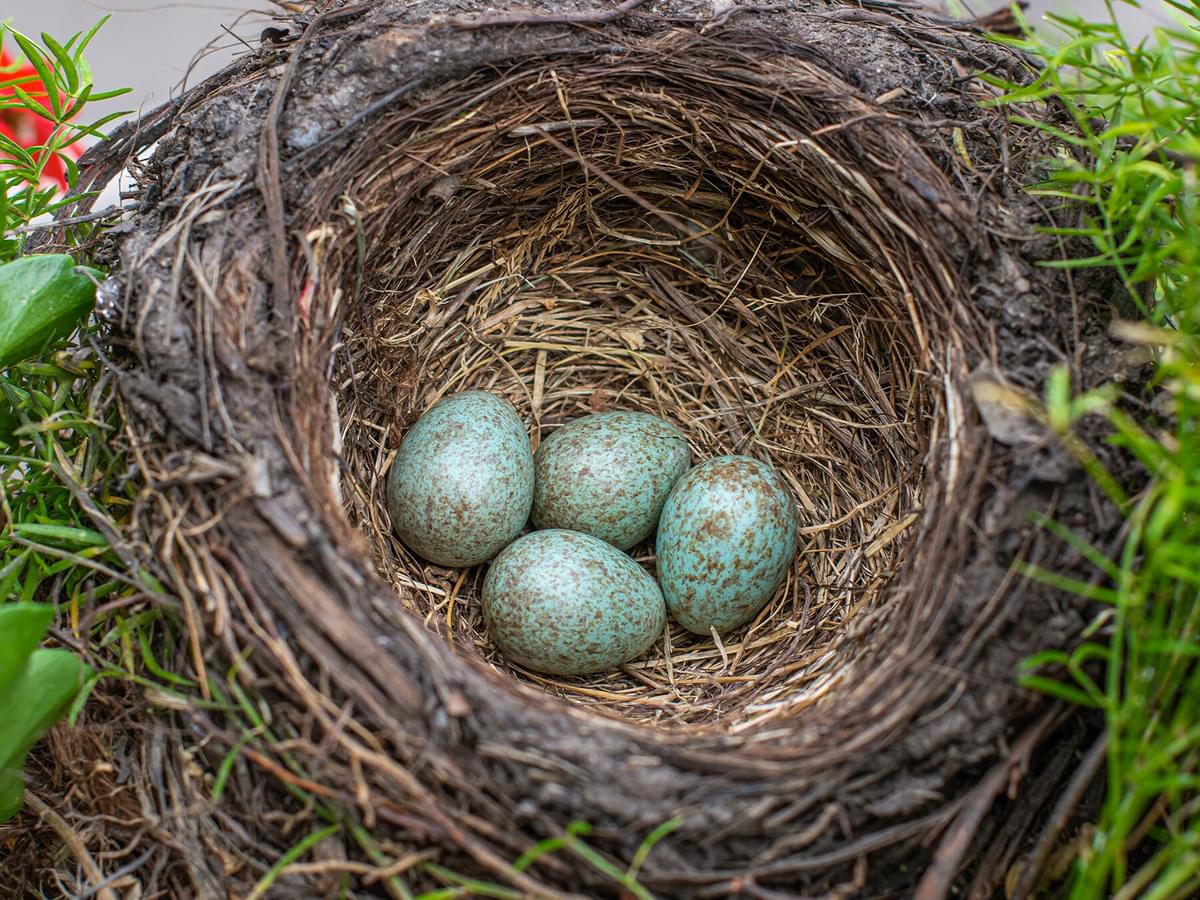A familiar garden visitor to many across the country, Blackbirds are a delightful species to watch. Male blackbirds live up to their names, but female blackbirds are, in fact, brown, not black!
In this article, we'll go through any other differences between the two sexes to help you when it comes to identification, as well as learn all about the female blackbird.

Close up of a Female Blackbird
What does a female blackbird look like?
Unlike male blackbirds, which are black all over with bright orange eye rings and beaks, female blackbirds aren't actually black and instead have sooty-brown with slight mottling plumages, lighter pale patches on the throat, and their beaks are more of a dull yellow-brownish colour.
Another major difference between male and female blackbirds is the length of their wings. On average, female blackbirds have shorter wings than male blackbirds.
This is common across many different species of birds as a result of sexual selection. This is because the bigger the male, the more capable he is of providing food and defending territory for the female.
Females do a lot less defending than males, so there's less pressure for them to be bigger.

Portrait of a female blackbird
Song differences
Apart from the visual differences, male and female blackbirds do produce different sounds.
Male blackbirds have a distinctive (and loud) melodious song that you're sure to have heard at some point - if you haven't, then you can listen below. They can be heard singing mostly during the breeding season, which is generally between March and early September, in an attempt to impress and attract a female mate.
As with the female species of many birds, female blackbirds rarely sing and, therefore much quieter than the male. Females do, however, sing during the breeding season, which is a subsong response to the courtship display of a male blackbird.
This isn't to say female blackbirds never sing as avid birdwatchers will tell you they in fact do. You're most likely to hear them when there are no other birds around, with a gentle sound similar to humming.
Female Blackbird Call
Sławomir Karpicki-Ignatowski, XC609366. Accessible at www.xeno-canto.org/609366.
Male Blackbird Call
Manceau Lionel, XC662689. Accessible at www.xeno-canto.org/662689.
Male Blackbird Song
Domagoj Tomičić, XC660815. Accessible at www.xeno-canto.org/660815.
Are female blackbirds territorial?
Similar to the male blackbird, females are also extremely territorial whilst on their breeding grounds. Outside this time during migration and winter can be highly sociable.

The nest and eggs of a blackbird
Nesting and raising young
When it comes to the breeding season, female blackbirds are solely responsible for building the nests. The nests are a large cup shape made out of a mixture of dry grass stems and small twigs. The nests are then finished off with a packing of mud and a lining of fine grass.
Nests are usually located in bushes, trees or climbing plants against a wall. They are also frequently located inside or outside buildings. The height off the ground can be anywhere from 0.5 m all the way up to 15 m.
When the female is constructing the nest, males are responsible for defending the territory and keeping watch whilst she works.
Both parents will feed the young when they fledge the nest; each adult will care for the same bird.

Juvenile blackbird being fed by a male
Confusion with Juvenile Blackbirds
Although male and female blackbirds are easily distinguishable, juvenile blackbirds are often misidentified as female blackbirds and vice versa. Juveniles are dark brown and have more of an extreme mottling with streaking below. The wing bars also tend to be a double buff-spotted detail.
Both sexes are the same when juveniles and are often confused with other species in the thrush family as well as adult female blackbirds.
It's fairly common to see juvenile blackbirds, as they will sometimes fledge the nest before they can fly and can be seen hopping across the ground, searching for food with their parents.

